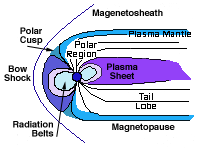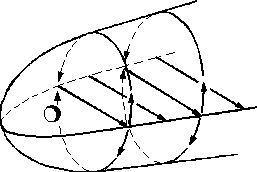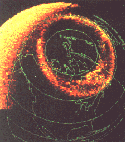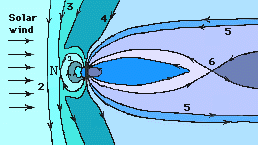|
That line contains a sharp bend: most of the plasma on the section beyond the bend is interplanetary, most of it on the section closer to Earth is terrestrial. However, both plasmas move together, continue to share the same line, and slowly intermix.
A while later, that line would have moved to position of the line right of "4", then to the position "5", and after that, perhaps half an hour later, the reconnection process would be reversed somewhere downstream of Earth, at a neutral point or line near the number "6". The interplanetary parts are then rejoined and flow away, and the terrestrial halves are reunited too.
Neglecting spill-over at boundary points like the sharp bend in line "3" (and glossing over some important, and as yet not completely understood, plasma physics), one realizes that the above process will transport near-noon plasma, originally earthward of the bend on line "3", to the distant tail. Dungey proposed that the plasma then flowed back earthward, through the plasma sheet.
|





 Official GSFC Home Page
Official GSFC Home Page  NASA WWW Home Page
NASA WWW Home Page